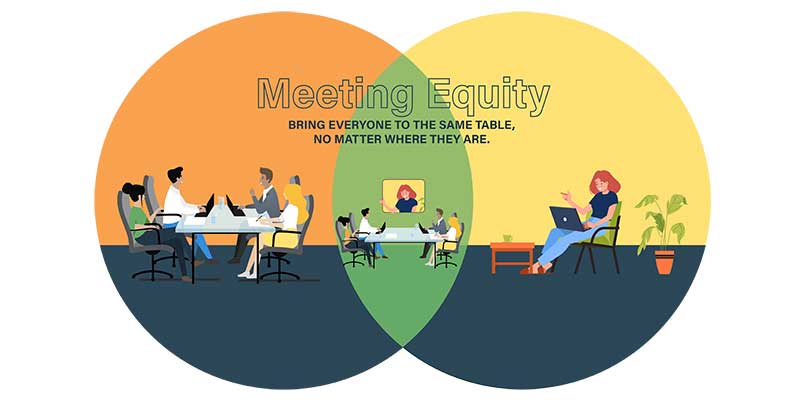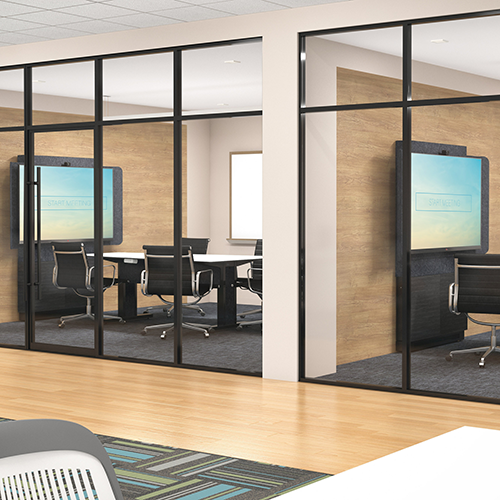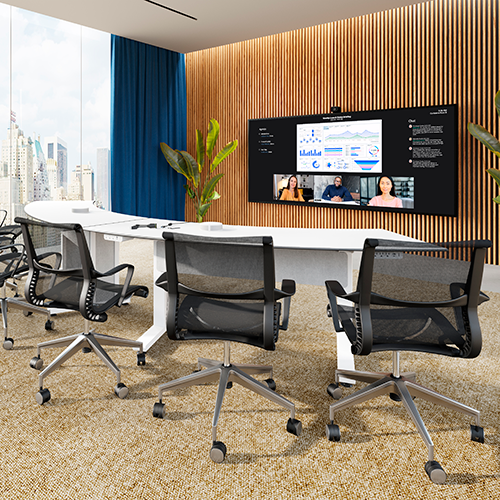Posted on 8/8/2022 by Legrand AV Team
We’ve said it before, and we’ll keep saying it. Conferencing has indelibly changed, and AV systems need to adapt to meet the new realities of the hybrid workplace. Prior to 2020, conferencing spaces were largely designed to be attended in person with AV equipment designated to share presentations and brainstorm. Remote attendees were more of an afterthought, and it showed. The odd duck out would be relegated to a corner of the projection screen while everyone in the room shared the same space in the video.
As we ease toward working agreements that include in office and remote days, we must assume that nearly every meeting will include a mix of in person and remote members. That new reality requires spaces that can ensure everyone in the meeting can be seen and be heard equally.
Companies that set up an equitable meeting experience for both remote and on-site workers show their employees they care about creating a culture of belonging by putting them first. Focusing AV design on meeting equity impacts hybrid company culture, space planning and technology. Providing equity eliminates needless alienation of remote and hybrid employees and keeps the workforce aligned on a common goal.
“Building in better practices of connecting and communicating at the workplace is essential,” said David Albright, Business Development, Commercial Interiors for Legrand | AV. “We need to find new ways to leverage the office as a vehicle of communicating our culture and making it a place people want to come back to.”

In terms of optimizing the space for meeting equity, integrators are orienting the people in the room around a camera and display. Instead of facing each other and potentially leaving anyone joining remotely in the awkward position of trying to find a way to be an equal part of the discussion, everyone is facing the camera to be sure remote members are on the same playing field.
That sort of forethought should be extended to audio. Overlapping dialog and poor room acoustics weren’t as much of an issue when everyone was in the same place. When one or two are joining remotely, however, it’s nearly impossible to pick out what anyone is saying. Analog collaboration (i.e. brainstorming on a whiteboard) is lost on remote attendees – we need to adapt new habits for working in these environments supported by technology, like digital touch screens, capture cameras to digitize analog content, and so on.
“Be sure to add ‘turn-taking’ discipline to your meetings,” said Marc Devlaeminck, Chief and Middle Atlantic Product Manager. “Getting people to speak one at a time is a great life hack for audio.”
AV solutions like the Forum Collaboration Suite include acoustic felt around the display and on the table bases to reduce ambient noise levels and reverberation. Using ceiling or table mics equidistant from everyone in the room also helps avoid audio issues. “The best advice I can give is not to use the built-in microphones on your laptop,” Devlaeminck added.
By maximizing the experience from anywhere, everyone on the call is engaged in collaboration on a level playing field, instead of worrying if a coworker is getting better opportunities simply by being physically in the office. We need to provide environments that allow employees to feel valued. To get to that level, the key to belonging is equally being heard and seen.
In short, bring everyone to the same table, no matter where they are.
Learn more about how the brands of Legrand | AV solve meeting equity as well as other expectations of the conferencing hybrid workspace by checking out our trends book.
Related News
 Businesses are discovering they need more conference spaces than before to handle hybrid workforce environments. Get the tips and tricks to make you a mass deployment dynamo.
Businesses are discovering they need more conference spaces than before to handle hybrid workforce environments. Get the tips and tricks to make you a mass deployment dynamo.  Find out how smart decisions now keep options open for adaptation down the road.
Find out how smart decisions now keep options open for adaptation down the road. Will the 21:9 ultrawide format change conferencing? Let’s find out together.
Will the 21:9 ultrawide format change conferencing? Let’s find out together.

 All News
All News